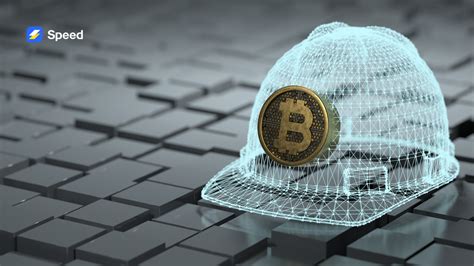Understanding Bitcoin Mining: A Comprehensive Guide

`markdown
Bitcoin mining is a fundamental process that underpins the entire Bitcoin network. But what exactly is it, and why is it so important? This guide provides a detailed overview of mining bitcoin, covering everything from the basics to the more complex aspects.
What is Bitcoin Mining?
Mining Bitcoin is the process of verifying and adding new transaction records to the Bitcoin blockchain. It involves solving complex mathematical problems to validate blocks of transactions. The first miner to solve the problem adds the block to the blockchain and is rewarded with newly minted Bitcoins and transaction fees.
The Significance of Bitcoin Mining
- Securing the Network: Mining ensures the security of the Bitcoin network by making it computationally difficult to alter or reverse transactions.
- Verifying Transactions: Miners verify transactions by checking that senders have sufficient funds and that the transactions are valid.
- Creating New Bitcoins: As a reward for their work, miners receive newly created Bitcoins, introducing new coins into circulation.
- Research thoroughly: Understand the technical and economic aspects of mining before investing.
- Assess electricity costs: Calculate the electricity costs in your area and ensure they are low enough to make mining profitable.
- Choose the right hardware: Select hardware that is efficient and cost-effective.
- Join a reputable mining pool: If joining a pool, research and choose a reliable one.
- Stay informed: Keep up-to-date with the latest developments in the Bitcoin mining industry.
The Process of Mining Bitcoin: A Step-by-Step Guide
1. Acquiring Mining Hardware
Modern mining primarily uses specialized hardware called ASICs (Application-Specific Integrated Circuits). These machines are specifically designed for the intense computational work required.
2. Joining a Mining Pool (Optional)
Due to the intense competition, solo mining is generally not profitable for most individuals. Joining a mining pool allows miners to combine their computational power and share the rewards.
3. Running Mining Software
Mining software connects your hardware to the Bitcoin network and directs it to solve blocks. Examples include CGMiner and BFGMiner.
4. Validating Transactions and Solving Blocks
The software directs the hardware to perform complex calculations to find a hash that meets the target difficulty. This process involves repeatedly hashing the block header with a nonce until a valid hash is found.
5. Receiving Rewards
Once a miner (or pool) successfully solves a block, they receive a reward of newly minted Bitcoins and any transaction fees associated with the transactions in the block. The reward amount is halved approximately every four years, a process known as "halving."
Factors Affecting Bitcoin Mining Profitability
Hardware Costs
The initial investment in mining hardware can be significant. ASIC miners can cost thousands of dollars.
Electricity Costs
Mining Bitcoin requires a lot of electricity, making electricity costs a major factor in profitability.
Mining Difficulty
The mining difficulty adjusts over time to maintain a consistent block creation rate. As more miners join the network, the difficulty increases, requiring more computational power to solve blocks.
Bitcoin Price
The price of Bitcoin directly affects the profitability of mining. A higher price makes mining more profitable.
The Environmental Impact of Bitcoin Mining
The high energy consumption of mining bitcoin has raised concerns about its environmental impact.
Energy Consumption
Mining requires significant amounts of energy, often derived from fossil fuels.
Sustainable Mining Practices
Efforts are being made to promote more sustainable mining practices, such as using renewable energy sources like solar and wind power.
Key Considerations for Aspiring Bitcoin Miners
FAQ: Bitcoin Mining
Q: What is the hash rate?
A: The hash rate is a measure of the computational power of a mining device or network. It represents the number of calculations per second that the device or network can perform. A higher hash rate increases the chances of solving a block.
Q: What is a mining pool?
A: A mining pool is a group of miners who combine their computational power to increase their chances of solving blocks. They then share the rewards proportionally based on the amount of power each miner contributed.
Q: Is Bitcoin mining still profitable?
A: Profitability depends on various factors, including hardware costs, electricity costs, mining difficulty, and the price of Bitcoin. Thorough analysis is necessary to determine profitability.
Q: What are ASIC miners?
A: ASIC (Application-Specific Integrated Circuit) miners are specialized hardware devices designed specifically for mining bitcoin. They are far more efficient than general-purpose computers or GPUs.
Q: What is the Bitcoin halving?
A: The Bitcoin halving is an event that occurs approximately every four years, where the block reward for mining is halved. This reduces the rate at which new Bitcoins are created and is designed to control inflation.
Conclusion
Mining Bitcoin is a vital process that secures the Bitcoin network and creates new coins. While it can be profitable, it also requires significant investment, technical knowledge, and attention to energy consumption. Understanding the intricacies of mining is essential for anyone looking to participate in or understand the Bitcoin ecosystem.
`




